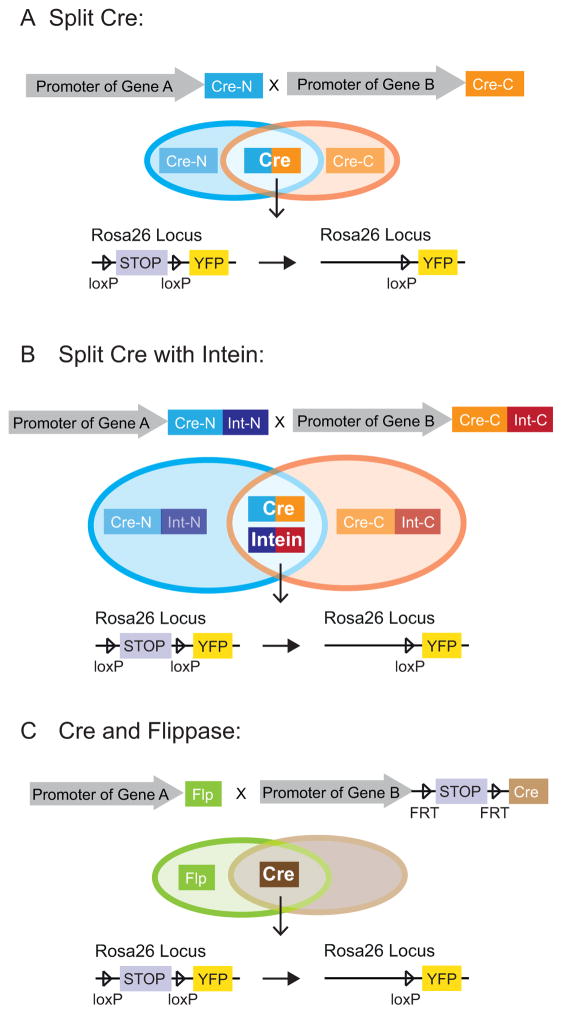Figure 3.
Schematic diagrams of lineage tracing strategies employing split-Cre or two recombinases. (A): In a split-Cre approach, each promoter controls the expression of either the N-terminus of Cre (Cre-N) or the C-terminus of Cre (Cre-C). A functional Cre protein is assembled only in cells where both promoters are active. (B): An intein is a fragment of a protein which catalyzes its own excision and promotes the rejoining of remaining portions. When the split-Cre protein (split into Int-N and Int-C fragments) is combined with intein, the rejoining efficiency of Cre-N and Cre-C is increased. (C): Two separate recombinases, Cre and flippase, can also be combined in lineage tracing to achieve cell-type specificities. In the cells where both promoters are active, flippase excises a “stop” codon flanked by two FRT sites, allowing the expression of Cre. Activated Cre further mediates the excision of a “stop” codon flanked by two loxP sites located downstream of the Rosa26 promoter, thereby turning on the expression of reporter genes such as YFP.

